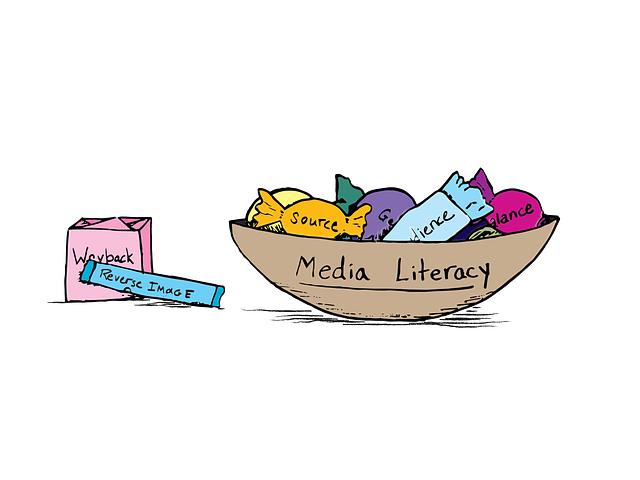In an age where information travels at the speed of light, the media serves as both a beacon of freedom and a battleground for censorship. Nowhere is this dichotomy more palpable than in Pakistan, a nation where the press has a rich tapestry of voices yet finds itself ensnared in a complex web of regulation and restriction. As journalists navigate the murky waters of reporting, they encounter a landscape marked by vibrant discourse and sobering challenges. This article delves into the intricate dynamics of freedom and censorship in Pakistan’s media, exploring the struggles and triumphs of those who endeavor to inform the public and hold power to account. With a keen eye on historical context and present realities, we will uncover how the pulse of journalistic expression beats amid the competing forces of liberty and control.
Exploring the Dichotomy of Expression and Restriction in Pakistans Media
In a nation where vibrancy and resilience coexist with constraints, the media landscape in Pakistan reflects a profound dichotomy between expression and restriction. On one hand, burgeoning digital platforms foster a sense of innovation and freedom among creators, enabling a diverse array of voices to emerge. This evolution has facilitated discussions around social issues, empowering citizens to share perspectives that were once marginalized. However, this newfound freedom is often met with censorship and suppression, particularly concerning content that challenges prevailing narratives or threatens powerful interests. The result is a persistent battle between the desire for open dialogue and the prevailing fear of repercussions.
Several factors contribute to this complex media environment, creating a tapestry of opportunities and obstacles for journalists and content creators alike. The following list outlines the key elements influencing the dynamics of media expression in Pakistan:
- Government Regulation – Increasing surveillance and stringent laws that inhibit free speech.
- Public Opinion – Societal pressures that shape the narrative, sometimes stifling unpopular viewpoints.
- Global Influences – The impact of international media trends that may inspire or complicate local narratives.
- Technological Advancements – The rise of social media and online platforms providing alternative outlets for expression.
To further illustrate the contrast between freedom and censorship in the media, the following table highlights notable instances of expression and restriction:
| Event | Type | Impact |
|---|---|---|
| Social Media Campaigns | Expression | Increased public engagement and awareness |
| Media Blackouts | Restriction | Suppression of dissenting voices |
| Investigative Journalism | Expression | Revelation of corruption and injustice |
| Journalist Arrests | Restriction | Chilling effect on press freedom |

The Role of Government Legislation in Shaping Media Narratives
The landscape of media in Pakistan is profoundly influenced by government legislation, which acts both as a protector of rights and a potential tool for censorship. Laws regarding media ownership, content regulation, and press freedom create a framework within which journalists operate. This duality often leads to a tightrope walk between freedom of expression and the constraints imposed by the state. For instance, the Electronic Media Regulatory Authority (PEMRA) has the power to regulate broadcast media, issuing licenses and implementing bans on certain content deemed inappropriate. Such regulations can shape public discourse by manipulating what narratives are allowed to flourish and which ones are suppressed.
Furthermore, the legal provisions concerning national security and anti-terrorism also impact media narratives by stifling dissent and controlling the flow of information. Censorship laws, however, are frequently criticized for their vagueness, allowing for selective enforcement. This environment fosters self-censorship among media houses that may avoid covering controversial topics to evade punitive measures. The interplay of media ownership and political affiliations creates a filtered narrative that often reflects the interests of the elite. The following table illustrates key legislative components and their influence on media narratives:
| Legislation | Impact on Media |
|---|---|
| PEMRA Ordinance | Regulates broadcast content; licenses media channels. |
| Anti-Terrorism Act | Allows censorship of content deemed a threat to national security. |
| Defamation Laws | Constricts criticism of public figures, leading to self-censorship. |
| Freedom of Information Act | Encourages transparency, but is often undermined by other laws. |

Empowering Journalists: Tools and Strategies for Resilience
In the complex tapestry of Pakistan’s media landscape, journalists face a multitude of challenges that test their resilience daily. To navigate the intricate balance between freedom and censorship, it is essential for media professionals to equip themselves with a toolkit of strategies that enhance their courage and adaptability. These may include:
- Digital Security Training: Proficiency in tools like VPNs and encryption software to safeguard communications.
- Building Collaborations: Networking with local and international non-profits that focus on press freedom to share knowledge and resources.
- Understanding Legal Protections: Familiarizing oneself with both national laws and international norms that protect journalistic rights.
- Creating Safe Spaces: Forming support groups with fellow journalists to discuss experiences and strategies for coping with stress and trauma.
Furthermore, resilience in journalism is bolstered by a proactive approach to personal well-being and mental health. By engaging in regular self-care practices and accessing mental health resources, journalists can sustain their passion for truth-telling while mitigating the toll of censorship. An essential aspect of this is continuous learning, which can be pursued through:
- Workshops and Webinars: Participating in training sessions focused on investigative journalism and ethical reporting in hostile environments.
- Peer Mentorship: Establishing mentor-mentee relationships to foster personal and professional growth.
- Storytelling Techniques: Learning innovative ways to tell compelling stories that resonate with audiences, even in restrictive environments.

Fostering a Culture of Media Literacy and Public Engagement
In an era where information is at our fingertips, fostering a robust understanding of media literacy is more important than ever. By equipping individuals with critical thinking skills, we empower them to discern credible sources from sensationalized narratives. To achieve this, various stakeholders, including educational institutions, NGOs, and community organizations, must collaborate to develop programs focused on:
- Education: Integrating media literacy into school curricula to enhance students’ analytical skills.
- Workshops: Hosting community workshops that engage citizens in discussions about media consumption and the impact of misinformation.
- Awareness Campaigns: Launching campaigns that promote understanding of the importance of verifying facts before dissemination.
Moreover, public engagement in the media landscape can serve as a catalyst for positive change. By encouraging an open dialogue around issues of freedom and censorship, communities can create an environment conducive to informed discussions. Initiatives that support this dialogue may include:
| Initiative | Description |
|---|---|
| Public Forums | Regular forums that invite citizens to share their thoughts and experiences related to media consumption. |
| Collaborative Projects | Joint projects between media organizations and communities to promote responsible journalism. |
| Social Media Campaigns | Utilizing platforms to raise awareness about media consumption and the implications of censorship. |
Final Thoughts
As we draw the curtain on our exploration of the intricate relationship between freedom and censorship in Pakistan’s media landscape, it becomes clear that this dynamic tableau reflects not only the challenges faced by journalists and content creators but also the resilience of a society striving for expression and accountability. The struggle for a free press is emblematic of larger societal aspirations—a delicate dance between safeguarding national interests and upholding the fundamental right to information.
Navigating this complex terrain requires not just vigilance from media professionals but also a conscious engagement from the public. As citizens become more aware of the power dynamics at play, the dialogue surrounding media freedom will only strengthen. The future of Pakistan’s media lies in fostering a culture of critical engagement, where diverse voices can coexist and contribute to a balanced narrative.
while censorship poses significant hurdles, it also ignites the flame of creativity and innovation among journalists and artists alike. By starting conversations, advocating for transparency, and supporting independent media, we can collectively chart a path toward a more open and dynamic media environment. As we look ahead, let us champion the belief that the pursuit of truth and freedom is not just a service to society, but a fundamental right that enriches the very fabric of a democratic world.



